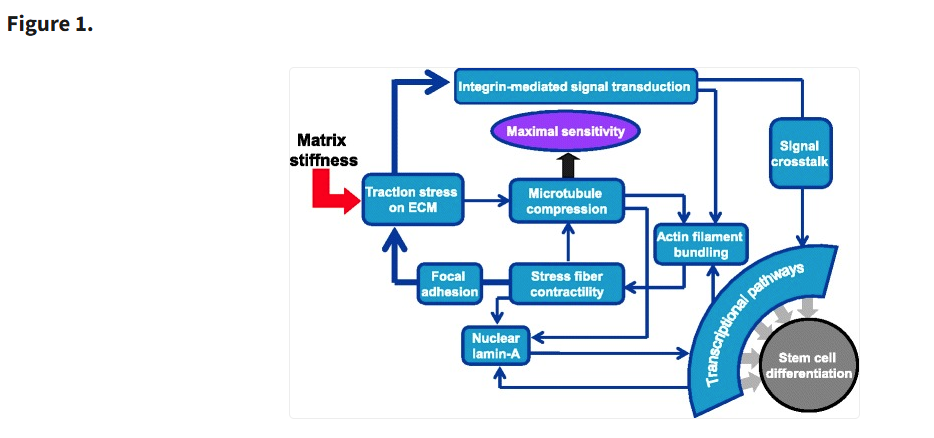Bin Fang, Yanjun Liu, Danning Zheng, Shengzhou Shan, Chuandong Wang, Ya Gao, Jing Wang, Yun Xie, Yifan Zhang, Qingfeng Li. The effects of mechanical stretch on the biological characteristics of human adipose‐derived stem cells. Journal of Cellular and Molecular Medicine. doi.org/10.1111/jcmm.14314, 24 April 2019.
Abstract
Adipose‐derived stem cells (ADSCs) are a subset of mesenchymal stem cells (MSCs), which have promised a vast therapeutic potential in tissue regeneration. Recent studies have demonstrated that combining stem cells with mechanical stretch may strengthen the efficacy of regenerative therapies. However, the exact influences of mechanical stretch on MSCs still remain inconclusive. In this study, human ADSCs (hADSCs) were applied cyclic stretch stimulation under an in vitro stretching model for designated duration. We found that mechanical stretch significantly promoted the proliferation, adhesion and migration of hADSCs, suppressing cellular apoptosis and increasing the production of pro‐healing cytokines. For differentiation of hADSCs, mechanical stretch inhibited adipogenesis, but enhanced osteogenesis. Long‐term stretch could promote ageing of hADSCs, but did not alter the cell size and typical immunophenotypic characteristics. Furthermore, we revealed that PI3K/AKT and MAPK pathways might participate in the effects of mechanical stretch on the biological characteristics of hADSCs. Taken together, mechanical stretch is an effective strategy for enhancing stem cell behaviour and regulating stem cell fate. The synergy between hADSCs and mechanical stretch would most likely facilitate tissue regeneration and promote the development of stem cell therapy.
Mechanical stretch was applied to hADSCs by FX‐5000T™ Flexcell® Tension Plus (Flexcell® International Corporation, Hillsborough, NC) (Figure 1C). Briefly, hADSCs were seeded on six‐well collagen I coated BioFlex™ culture plates. Cyclic stretch was applied in a sinusoidal pattern with 10% amplitude at 0.5 Hz for designated duration (stretch group). Cells cultured in the same plates but left non‐stretched were used as controls (static group).





